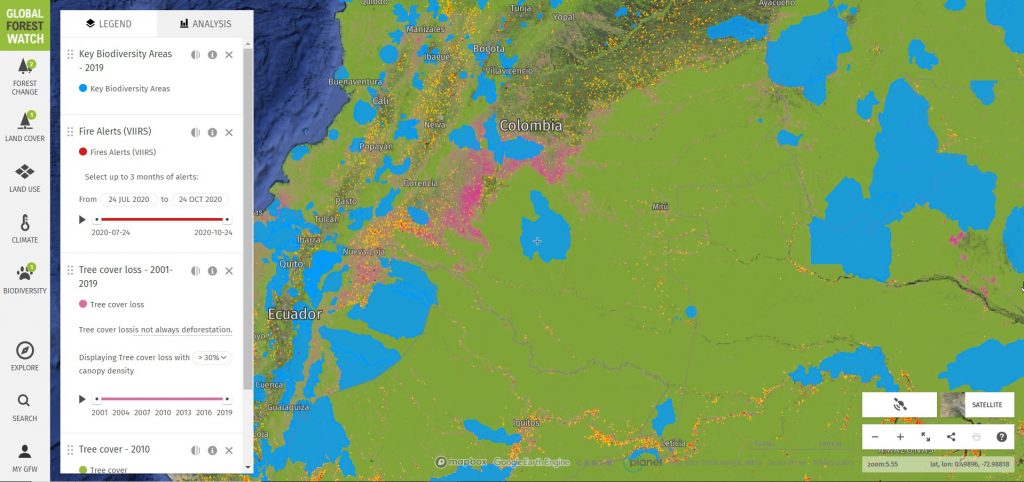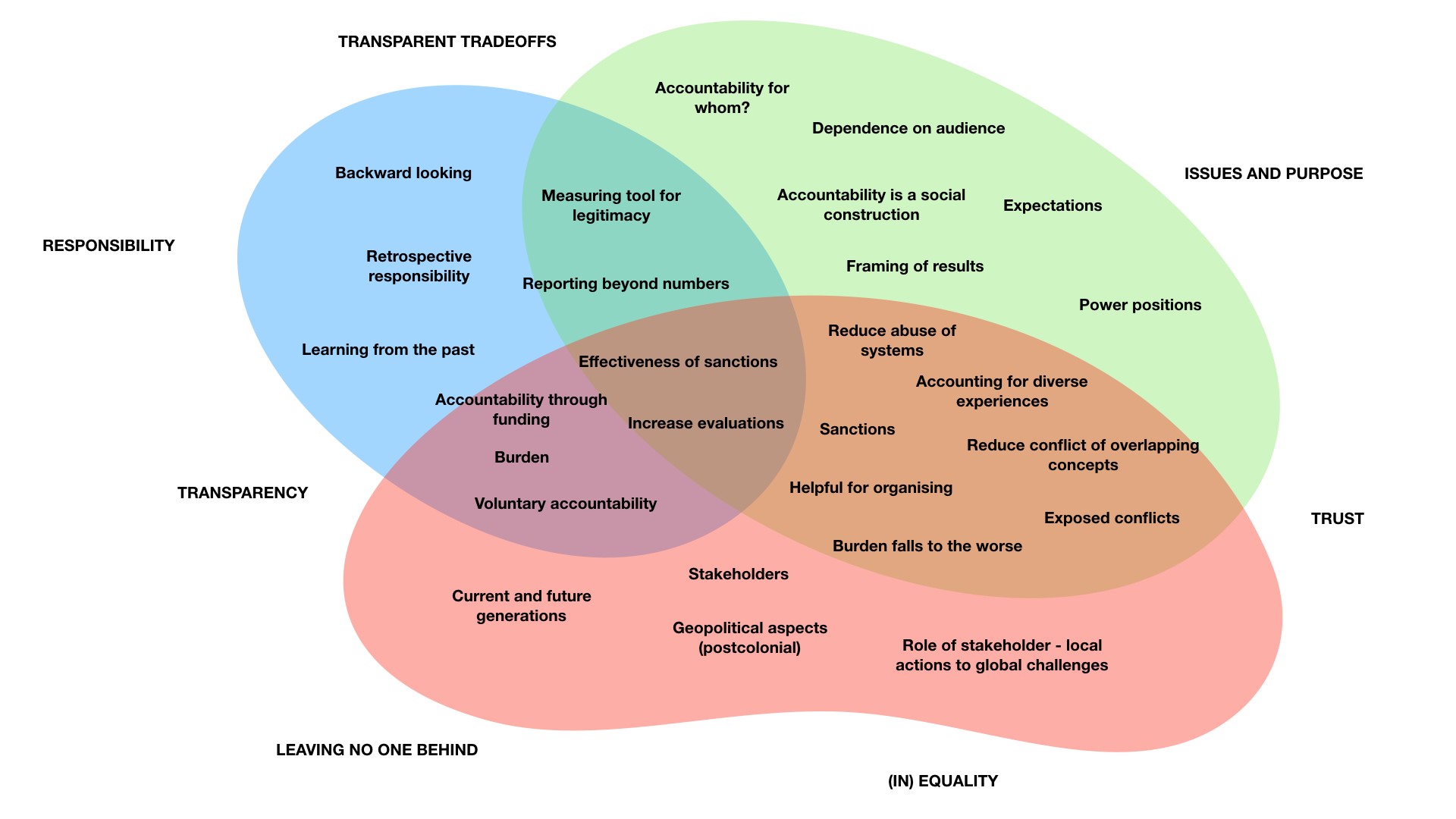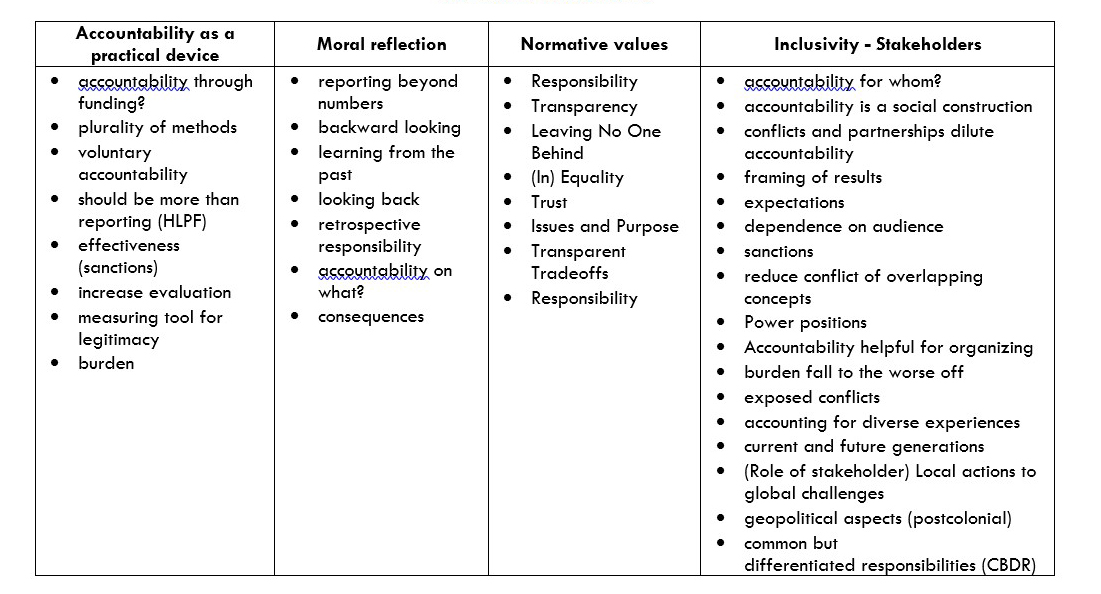Posted on 17 February 2021 by Christie Nicoson (Department of Political Science).
The views expressed in this publication are those of the author and do not necessarily represent those of the Agenda 2030 Graduate School or Lund University. The present document is being issued without formal editing.
This blog post was originally posted as a
Story on the webpage of Resilience – resilience.org
The United Nations’ 2030 Agenda[1] sets out global priorities, calling on countries to take “transformative steps which are urgently needed to shift the world onto a sustainable and resilient path”. The Agenda seeks to strengthen universal peace as part of a holistic agenda, bringing together social, environmental, and economic goals for sustainable development. Globally and in our local communities, we face complex challenges of how to address these different facets of sustainability.
This historic decision is far reaching, including not least goals to build sustainable peace and take urgent climate action. Climate change is both an ecological and political problem, bringing broad impacts[2] for human societies, including negative consequences for health, infrastructure, and security. These impacts have consequences for peace, affecting dynamics of violent conflict and (re)producing situations of vulnerability (consider for example humanitarian consequences[3] of climate change). Climate change makes it clear that achieving peace entails not only ending violent wars, but also addressing structural violence – systemic harms perpetrated by situations of vulnerability or privilege shaped by societal power structures.
In a recent article[4] published in Sustainability Science, I explore how climate action and peace can be advanced simultaneously. Finding an answer, I suggest, lies in making space to imagine alternatives to our current sustainability approach: transitioning to a different economic system that focuses on people rather than profit, foregrounding broad understandings of peace, and pursuing societal change. Seeds of such change, lie with degrowth, activities and policies that recenter the economy on ecological and human well-being. Examples of degrowth provide a starting point for considering concrete steps toward tackling structural violence, fostering climate resilience, and advancing peace.
Peace, climate, and the economy
While the 2030 Agenda calls for climate action and development of peace alongside continued economic growth, research has not always supported linkages between these phenomena. To start, economic growth has long been seen as key to raising living standards, as well as essential for building peace. For example some studies[5] have linked low-income levels and slow economic growth to conflict between and within states, or have posited that sustained economic growth helps reduce the risk of recurring civil conflict[6]. However, others[7] have shown that the opposite may instead be true, and that rather than resulting from growth, peace may stem from other factors such as people’s ability to have decent work opportunities or access to services.
Looking at peace in a positive sense, encompassing not only the absence of war but also of structural violence, the results become even more wary. Economic growth is shown to inflict harm against both people and the environment, perpetrating “market violence”[8]. Furthermore, despite increased economic growth, we find that almost all countries are facing rising average inequality[9]. While economic growth may be essential to help people achieve a certain standard of living, the benefits seem to stall or diminish after a certain threshold[10]. That is, economic growth may have its place, but only up to a point.
The environmental impact of continued economic growth presents other challenges. Proposals in line with the logic of Agenda 2030 suggest that we can continue economic growth without further contributing to climate change by shifting to a “green growth” framework. Essentially, by using cleaner energy, we could still continue to grow the economy but without such detrimental climate impacts. However, researchers have shown that this may be not only challenging, but potentially impossible to achieve within the timeframe and at the scale needed to prevent catastrophic climate change[11]. Decoupling – or separating economic growth from resource use and carbon emissions –does not seem feasible on a global scale nor to maintain in the long term[12].
An alternative approach: climate resilient peace through degrowth
In my recent article, I bring together findings to highlight aspects of degrowth processes that hold promise for peace in our communities in light of climate change. I suggest three key aspects of degrowth that hold potential to benefit the environment while fostering peace: redistribution, reprioritized care, and addressing global equity.
First and foremost, what is degrowth? Degrowth is a different kind of economic model. It includes both philosophical ideals as well as social and political actions for a transition to a society where growth is no longer the central economic goal. It is not an economic recession, but rather an intentional shift. A degrowth economy centers on sharing, simplicity, conviviality, care, and the commons[13]. Degrowth entails ecological aspects – downscaling of production and consumption, as well as social – enhancing human ecological well-being[14].
Redistribution is one important aspect of degrowth. This can help foster peace by moving us beyond structural violence. In many communities, resources and power are disproportionately allocated and held, leaving some groups in positions of privilege and others at a disadvantage. A transition towards degrowth will require us to share political power, wealth, leisure time, and other resources more equitably and equally. What does this look like? Take the example of localizing food systems through urban gardens. Grassroot urban gardens have relatively low environmental impacts and provide benefits such as filtering air and water, preventing soil erosion, and reducing dependence on petroleum-based food production systems[15]. Urban gardens not only make healthy food options available, but can also facilitate social benefits. For example, they can strengthen neighborhood relations and foster sharing of space and responsibilities, political agency, employment opportunities, or reclaiming “unutilized” spaces in cities[16]. Urban gardening can not only contribute to peace materially – providing food resources to improve well-being – but also by redistributing resources and power at a community level.
Reprioritized care, meanwhile, is a process that holds promise for disrupting harmful underlying power structures. Take, for example, gendered hierarchies. Not only do women still make less than men in paid employment, they also continually bear the brunt on reproductive and care work. Care work includes actions that underlie the “formal” economy by providing for the welfare of communities. This work might take the form of caring for young and elderly, education, or environmental work, and it is often unpaid. The peaceful potential here is in disrupting this hierarchy and revaluing care. Policies such as basic income hold potential to help create this shift, balancing household power linked not only to gender but also income, education, ethnicity, or race; and on a higher level, challenging the divide in society between receivers and givers[17]. This also holds potential environmental benefits, by for example limiting harmful emissions through reducing the consumption of status goods and bringing more people to a modest expenditure level[18].
Finally, global equity. Not only is wealth held disproportionately, but responsibility for climate damages is also unbalanced. The world’s richest 1% produce half the world’s emissions[19]. Although there are wealthy individuals all over the world, the majority of those in the top 10% bracket live in rich OECD countries[20]. Moreover, high-income countries also hold the greatest responsibility for driving climate change[21]. Addressing these inequalities in wealth and environmental damages holds potential to foster peace. For example, wealth caps or maximum income policies put a ceiling on how much an individual can amass. This not only helps redistribute wealth, but also limits environmental harm by curbing unsustainable lifestyles and holding the biggest and richest emitters responsible, addressing inequalities both between and within countries. Such policies already exist in some localities or in specific sectors, and have been proposed or are being used in for example the United States, Great Britain, Switzerland, Spain, and the Netherlands[22].
Envisioning a peaceful future
It is important to realize that these steps are not inherently peaceful. For example, there are also examples where urban gardens, rather than holding benefits for peace as discussed above, could entrench systems of structural violence by marginalizing funding or keeping food resources restricted to only certain parts of a community. The pursuit of peace must keep questions of intersectionality at the forefront – how do factors such as race, gender, or class intersect to create particular privileges or vulnerabilities in society? What is important here is the process towards peace. The above examples highlight processes of systemic change – addressing structural violence and disrupting harmful power structures peace.
The examples and pathways outlined here present a first step towards thinking about not only how to take climate action and foster peace, but how to achieve these two sustainability goals simultaneously. To do so, we must not only take care to address structural violence, but to do so in a way that does not further contribute to climate change. The processes of redistribution, reprioritized care economies, and global equity help us see how we can address differentiated climate vulnerability as well as take steps to help mitigate further climate change and environmental damage.
The full article on which this post is based and further references can be found in the special issue of Sustainability Science,
“The Sustainability–Peace Nexus in the Context of Global Change”, at https://doi.org/10.1007/s11625-021-00906-1.
[1] https://sustainabledevelopment.un.org/
[2] Mora, C., Spirandelli, D., Franklin, E.C., Lynham, J., Kantar, M.B., Miles, W., Smith, C.Z., Freel, K., Moy, J., Louis, L.V., Barba, E.W., Bettinger, K., Frazier, A.G., Colburn IX, J.F., Hanasaki, N., Hawkins, E., Hirabayashi, Y., Knorr, W., Little, C.M., Emanuel, K., Sheffield, J., Patz, J.A., Hunter, C.L., 2018. Broad threat to humanity from cumulative climate hazards intensified by greenhouse gas emissions. Nature Climate Change 1062–1071. https://doi.org/10.1038/s41558-018-0315-6
[3] https://www.rodekors.no/vart-arbeid/overlapping-vulnerability-red-cross-climate-report/
[4] Nicoson, C., 2021. Towards climate resilient peace: an intersectional and degrowth approach. Sustain Sci.
https://doi.org/10.1007/s11625-021-00906-1
[5] Chassang, S., Padró i Miquel, G., 2009. Economic Shocks and Civil War. QJPS 4, 211–228.
https://doi.org/10.1561/100.00008072
Gartzke, E., 2007. The Capitalist Peace. Am J Political Science 51, 166–191. https://doi.org/10.1111/j.1540-5907.2007.00244.x
[6] Collier, P., Hoeffler, A., Söderbom, M., 2008. Post-Conflict Risks. Journal of Peace Research 45, 461–478.
https://doi.org/10.1177/0022343308091356
[7] Vernon, P., 2015. Peace through prosperity: Integrating peacebuilding into economic development. International Alert.
[8] Chertkovskaya, E., Paulsson, A., 2020. Countering corporate violence: Degrowth, ecosocialism and organising beyond the destructive forces of capitalism. Organization 135050842097534. https://doi.org/10.1177/1350508420975344
Fırat, A.F., 2018. Violence in/by the market. Journal of Marketing Management 34, 1015–1022.
https://doi.org/10.1080/0267257X.2018.1432190
[9] World Inequality Lab, 2018. World Inequality Report. World Inequality Lab, Berlin.
[10] Easterlin, R.A., McVey, L.A., Switek, M., Sawangfa, O., Zweig, J.S., n.d. The happiness–income paradox revisited. Proceedings of the National Academy of Sciences of the United States of America 107, 22463–22468. https://doi.org/10.1073/pnas.1015962107
[11] Ward, J.D., Sutton, P.C., Werner, A.D., Costanza, R., Mohr, S.H., Simmons, C.T., 2016. Is Decoupling GDP Growth from Environmental Impact Possible? PLoS ONE 11, e0164733.
https://doi.org/10.1371/journal.pone.0164733
[12] Hickel, J., Kallis, G., 2020. Is Green Growth Possible? New Political Economy 25, 469–486.
https://doi.org/10.1080/13563467.2019.1598964
[13] Kallis, G., Kostakis, V., Lange, S., Muraca, B., Paulson, S., Schmelzer, M., 2018. Research On Degrowth. Annu. Rev. Environ. Resour. 43, 291–316. https://doi.org/10.1146/annurev-environ-102017-025941
[14] D’Alisa, G., Demaria, F., Kallis, G. (Eds.), 2015. Degrowth: A vocabulary for a new era. Routledge, Oxon and New York.
[15] Clarke, M., Davidson, M., Egerer, M., Anderson, E., Fouch, N., 2019. The underutilized role of community gardens in improving cities’ adaptation to climate change: a review. PPP 12, 241–251. https://doi.org/10.3351/ppp.2019.3396732665
[16] Colasanti, K.J.A., Hamm, M.W., Litjens, C.M., 2012. The City as an “Agricultural Powerhouse”? Perspectives on Expanding Urban Agriculture from Detroit, Michigan. Urban Geography 33, 348–369.
https://doi.org/10.2747/0272-3638.33.3.348
Taylor, D.E., Ard, K.J., 2015. Research Article: Food Availability and the Food Desert Frame in Detroit: An Overview of the City’s Food System. Environmental Practice 17, 102–133. https://doi.org/10.1017/S1466046614000544
White, M.M., 2011. Sisters of the Soil: Urban Gardening as Resistance in Detroit. Race/Ethnicity: Multidisciplinary Global Contexts 5, 13–28. https://doi.org/10.2979/racethmulglocon.5.1.13
[17] Cantillon, S., McLean, C., 2016. Basic Income Guarantee: The Gender Impact within Households. Journal of Sociology & Social Welfare 43, 25.
[18] Bollain, J., Groot, L., Miller, A., Schmidt, E., Tahiraj, E., Verlaat, T., Yi, G., 2019. A Variety of Experiments, in: Torry, M. (Ed.), The Palgrave International Handbook of Basic Income. Springer International Publishing, Cham, pp. 407–435.
https://doi.org/10.1007/978-3-030-23614-4_21
[19] Oxfam, 2015. Extreme Carbon Inequality.
https://doi.org/10.1163/2210-7975_HRD-9824-2015053
[20] Chancel, L., Piketty, T., 2015. Carbon and inequality: from Kyoto to Paris. Trends in the global inequality of carbon emissions (1998-2013) & prospects for an equitable adaptation fund. Paris School of Economics, Paris.
[21] Hickel, J., 2020. Quantifying national responsibility for climate breakdown: an equality-based attribution approach for carbon dioxide emissions in excess of the planetary boundary. The Lancet Planetary Health 4, e399–e404.
https://doi.org/10.1016/S2542-5196(20)30196-0
[22] Buch-Hansen, H., Koch, M., 2019. Degrowth through income and wealth caps? Ecological Economics 160, 264–271. https://doi.org/10.1016/j.ecolecon.2019.03.001


















Comments